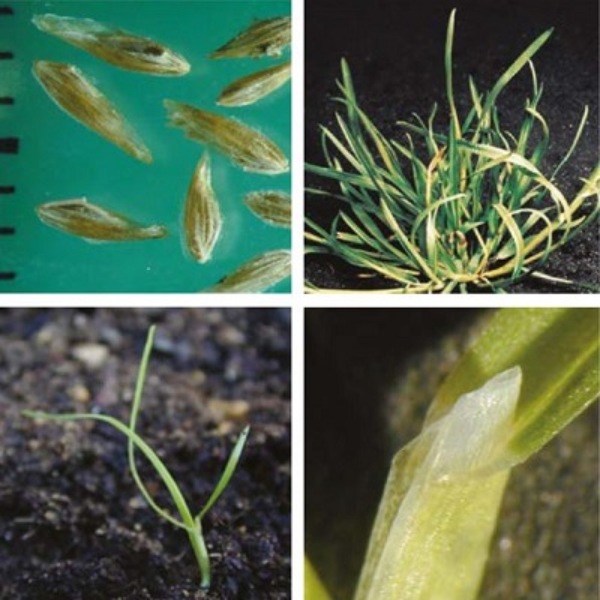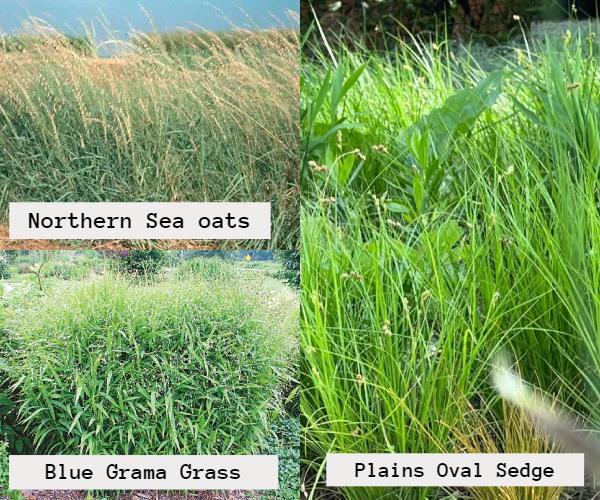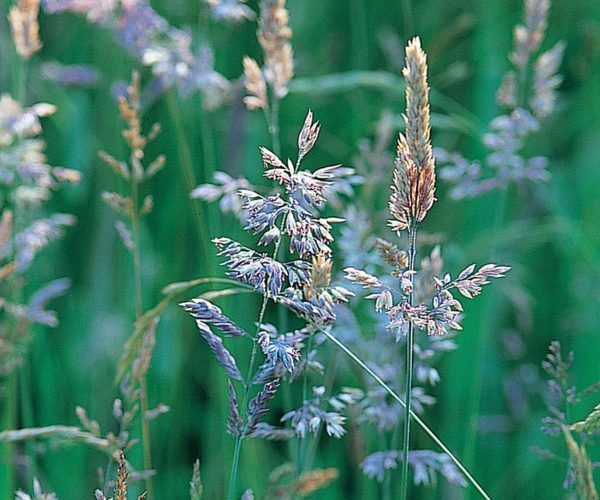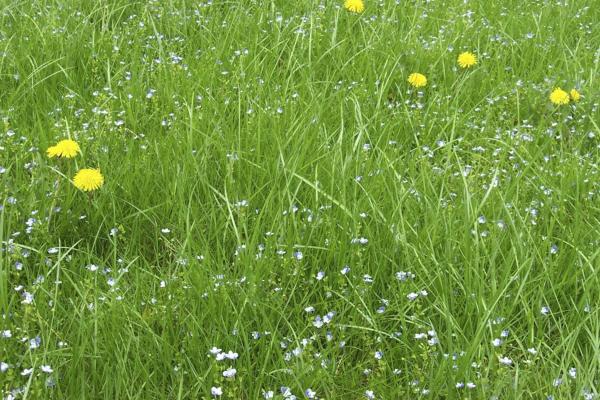Meadow grasses are a diversified group of grasses that grow in open meadows, disturbed areas, and abandoned spots. They are widespread across the globe. Meadow grasses play a significant role in the ecosystem. They are the source of food and habitat for many insects, birds, and animals. In addition to their ecological importance, these grasses also enhance the beauty of landscapes.
Grass Descriptive
Plant Type: Perennial
Scientific Name: Poa annua
Common Name: Annual Meadow Grass, Blue Grass, Tussock
Family: Poaceae
Genua: Poa
Meadow Grasses Identification
Meadow Grasses is an annual or occasionally perennial plant. It is characterized by a light green, low-growing grass that forms clumps and has tall, slender stems. The leaves are blade-like and slightly flattened because they are folded rather than rolled, and they have blunt tips at the ends. Likewise, it produces a yellow-green flower head that is triangular, featuring branched spikelets that contain delicate flowers. Meadow grasses typically have fibrous roots that spread through the soil. Additionally, they often possess underground stems called rhizomes.
Types of Meadow Grasses
Meadow Grass comes in many varieties, from delicate grasses that grow in small clumps to robust species that can reach up to eight feet tall. Some meadow grasses thrive in full sunlight, while others are adaptable and can handle partial shade. Here we introduce a variety of Meadow Grasses, each with unique characteristics.

Plains Oval Sedge
Plains Oval Sedge, also known as Carez brevior, is a hardy grass that thrives in diverse conditions. It features triangular stems rising from low tufts of narrow, grass-like leaves. It forms dense bunches that grow up to 12 inches tall, from short creeping rhizomes. The stems bear prickly green oval spikelets that turn golden brown as they mature. Moreover, this grass is drought-tolerant, can endure controlled burn, and resists deer and rabbits.
Northern Sea oats
Scientifically known as Chasmanthium latifolium, this grass is exceptionally adaptable and thrives in shaded areas. The plant features arching seed heads that mature into a striking golden bronze color. Similarly, the foliage resembles bamboo with its elegant, arching form, and the dangling, flat flower spikes. This grass also serves as a sanctuary and food source for birds and wildlife. Northern Sea oats flourish in moist environments but are also quite tolerant of dry conditions when planted in shaded areas.
Blue Grama Grass
Blue Grama Grass, scientifically known as Bouteloua gracilis, is drought-resistant grass and easy to grow from seed. This grass features fine, narrow leaves and produces distinctive blue-gree seedheads that extend horizontally from the tips of each stem. Blue Grama thrives during the summer months when the soil temperatures are warm.
Switchgrass
Switchgrass, or Panicum virgatum, is a warm-season perennial grass renowned for its bluish-green foliage and airy blooms that appear in late summer. This grass usually grows 3 to 4 feet tall. However, with its flower spikes, switchgrass can reach up to 7 feet tall. For optimal growth, plant switchgrass in full sun in moist clay or sandy soils. While it can tolerate partial shade, the plant may not grow as densely and could flop over.

Growing conditions of Meadow Grass
Meadow Grass may be an annual or a short-lived perennial, but it is usually considered an annual in crop fields. It grows throughout the year but does best from April to September when soil moisture levels are optimal. It struggles in drought conditions, very acidic soils, and areas with low phosphate levels. Meadow Grass has a minimum temperature requirement of 2 to 5°C, although it grows best at temperatures of about 7°C. Similarly, it can tolerate temperatures up to 35°C. As it matures, Meadow Grass becomes a tufted plant and first flowers within 44 to 55 days after germination. It can flower and produce seeds throughout the year, although production peaks in May and June. A single plant can generate up to 13,000 seeds.
Methods to control Meadow Grasses
Controlling meadow grasses is crucial for protecting ecosystems, maintaining biodiversity, and preventing them from becoming invasive. In agriculture, managing these grasses ensures better crop health by reducing competition for resources. For parks and recreational areas, proper control keeps these spaces attractive and functional. Additionally, managing aggressive grasses helps preserve soil quality and reduces the risk of wildfires.
1. Delay Autumn Cultivation: Meadow grasses grow most in September. As temperatures begin to drop, its growth gradually decreases. By cultivating crops in October, you can better manage the spread of grass.
2. Removing Clumps After Ploughing: Before sowing the next crop, remove clumps of surviving grasses, especially perennial grass, as they can become future weed problems.
3. Spring Crops: Many spring crops are competitive and grow quickly. These crops must establish and grow quickly to outcompete meadow grass, which is to be kept covered and controlled.

4. Boundary Strips: Use cultivated boundary strips to prevent weeds from spreading into the fields. It should become a regular practice and not just a one-time effort.
5. Using herbicides: Common herbicides used to control meadow grasses. Applied it either before (pre-em) or after (post-em) the grass emerges. Pre-em herbicides stop growth before seeds germinate, while post-em herbicides target established plants.
Conclusion
In conclusion, meadow grasses are said to play an essential part in the ecosystem. They sustain a wide range of wildlife and landscape beauty. They tolerate conditions and play a part in food and habitat support. Learning to identify these grasses by features that include low-growing clumps, slender stems, and yellow-green flower heads can help us appreciate the role they play out there in nature. Meadow grasses need to be effectively managed to maintain ecosystems in good health, maximize agricultural productivity, and preserve the aesthetic qualities and functional capability of recreational space.
Also read Low-Maintenance Lawn Grasses That Practically Take Care of Themselves!
Frequently Asked Questions
1. What are Meadow Grasses?
Meadow grasses are a diversified group of grasses that grow in open meadows, disturbed areas, and abandoned spots. They play a significant role in the ecosystem, providing food and habitat for many insects, birds, and animals.
2. How can I identify Meadow Grasses?
Meadow grasses feature light green, low-growing clumps with tall, slender stems. The leaves are flat and blade-like with blunt tips, and they produce yellow-green triangular flower heads with branched spikelets.
3. What are the growing conditions for Meadow Grasses?
Meadow grasses thrive from April to September with optimal soil moisture. However, they struggle in drought, acidic soils, and low phosphate areas.
